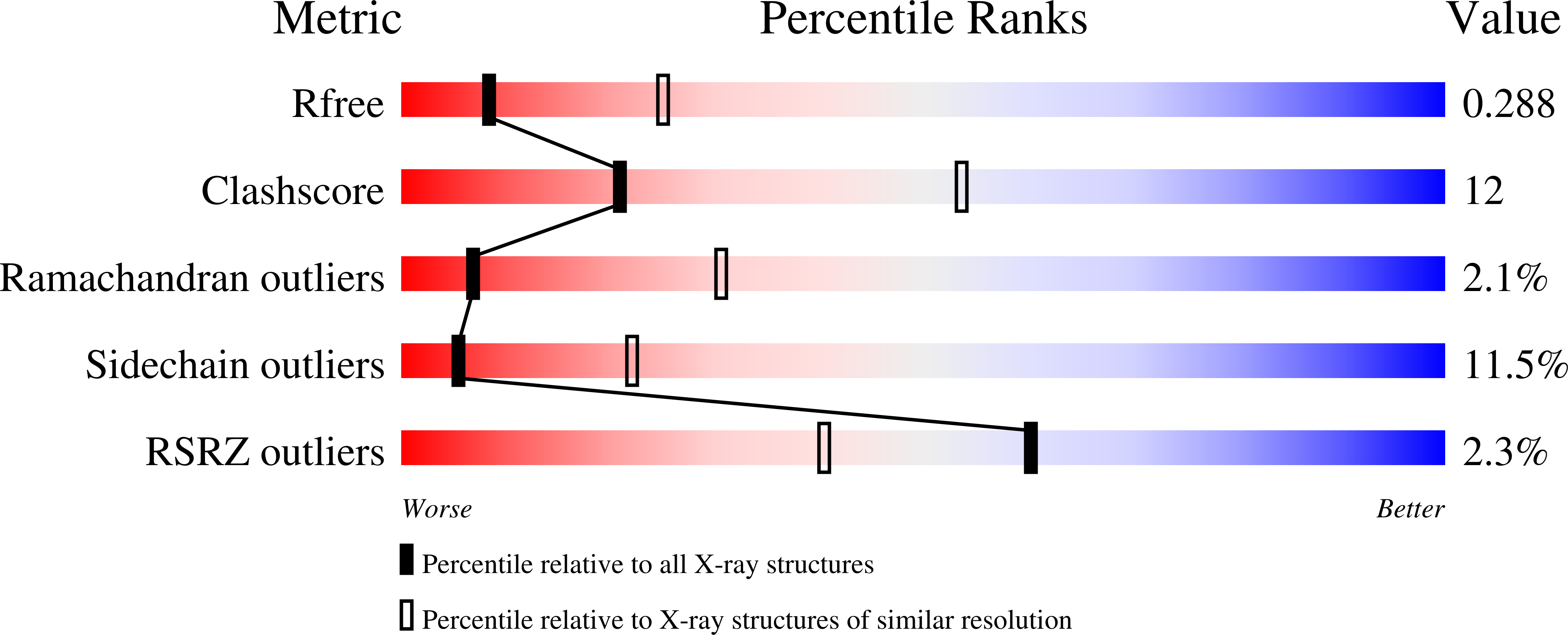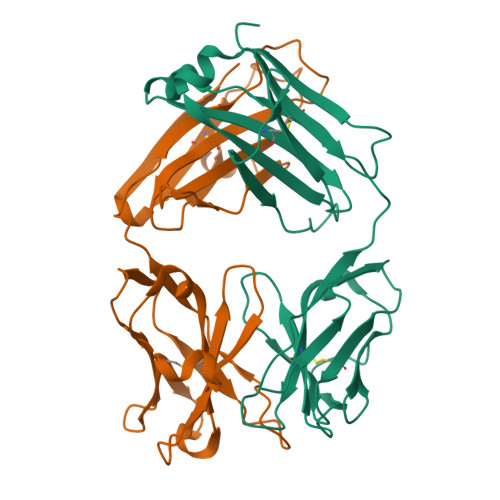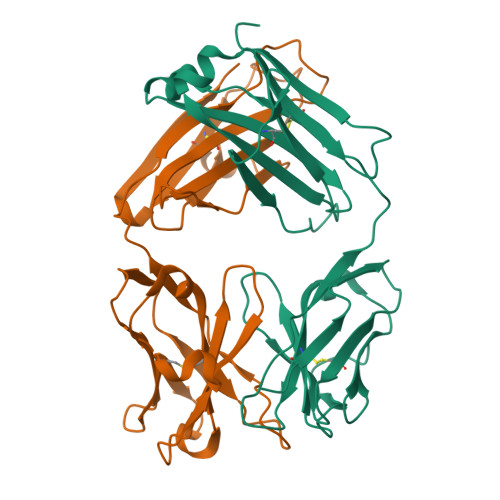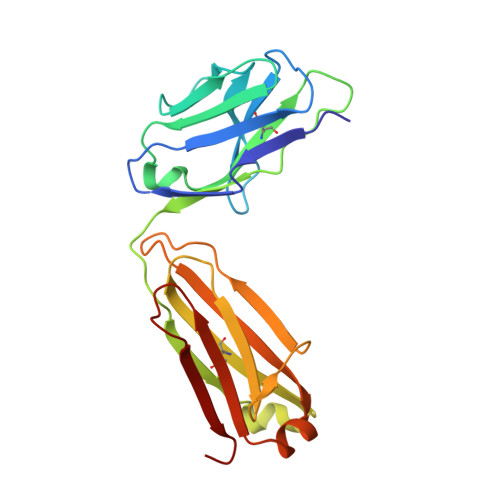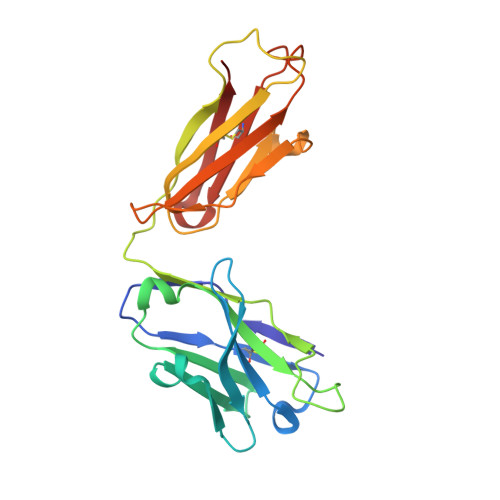Antibody humanization by redesign of complementarity-determining region residues proximate to the acceptor framework.
Hanf, K.J., Arndt, J.W., Chen, L.L., Jarpe, M., Boriack-Sjodin, P.A., Li, Y., van Vlijmen, H.W., Pepinsky, R.B., Simon, K.J., Lugovskoy, A.(2014) Methods 65: 68-76
- PubMed: 23816785
- DOI: https://doi.org/10.1016/j.ymeth.2013.06.024
- Primary Citation of Related Structures:
4KY1 - PubMed Abstract:
Antibodies are key components of the adaptive immune system and are well-established protein therapeutic agents. Typically high-affinity antibodies are obtained by immunization of rodent species that need to be humanized to reduce their immunogenicity. The complementarity-determining regions (CDRs) contain the residues in a defined loop structure that confer antigen binding, which must be retained in the humanized antibody. To design a humanized antibody, we graft the mature murine CDRs onto a germline human acceptor framework. Structural defects due to mismatches at the graft interface can be fixed by mutating some framework residues to murine, or by mutating some residues on the CDRs' backside to human or to a de novo designed sequence. The first approach, framework redesign, can yield an antibody with binding better than the CDR graft and one equivalent to the mature murine, and reduced immunogenicity. The second approach, CDR redesign, is presented here as a new approach, yielding an antibody with binding better than the CDR graft, and immunogenicity potentially less than that from framework redesign. Application of both approaches to the humanization of anti-α4 integrin antibody HP1/2 is presented and the concept of the hybrid humanization approach that retains "difficult to match" murine framework amino acids and uses de novo CDR design to minimize murine amino acid content and reduce cell-mediated cytotoxicity liabilities is discussed.
Organizational Affiliation:
Biogen Idec, 12 Cambridge Center, Cambridge, MA 02142, United States. Electronic address: karl.hanf@biogenidec.com.







